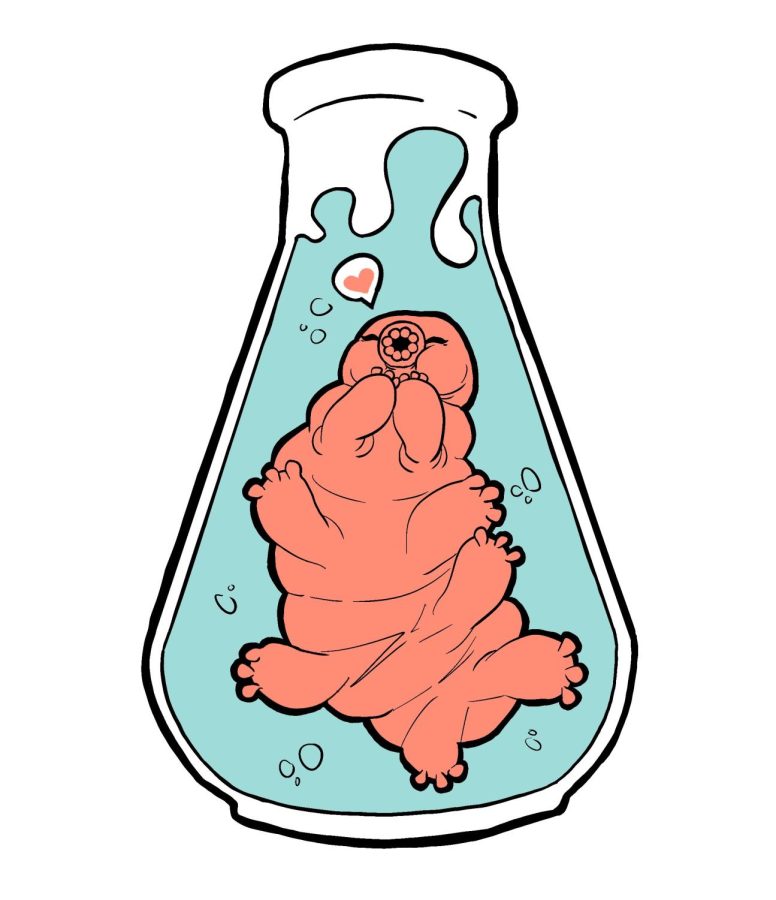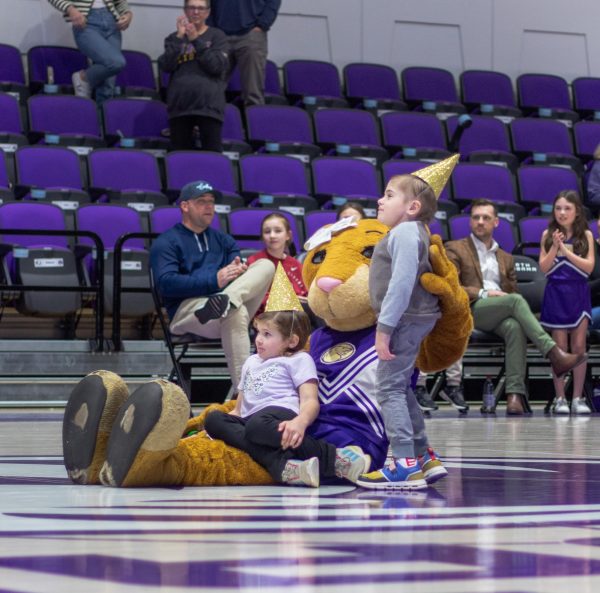Student, professor investigate tardigrades
January 26, 2023
Christa Terry, a biology major at the University of North Alabama, is in her second semester of collaboration with Dr. Paul Davison on researching the presence of tardigrades within pine cones in the southeastern United States.
Tardigrades, often called water bears or moss piglets, are microscopic organisms that can be found on a variety of surfaces, both terrestrial and aquatic. Many types are able to survive in extreme conditions.
Terry, originally from Decatur, Ala., has had a longstanding love for all things biology. With a goal of becoming a surgeon, the biology degree that she is earning will serve her in medical school.
The opportunity to contribute to this research project came in the spring semester of 2022, when she took Davison’s Nonvascular Plants class.
“We did a lab where we had to find little microorganisms like water bears, nematodes and rotifers,” said Terry. “I think he could tell that I was having a really good time, because I was really enjoying it. I found a water bear, and I thought it was just the coolest thing. Around that time, he told me that he was doing a research project in the next semester, and he asked if I would be interested in helping with it.”
Davison was interested in studying the unique habitat of the pine cone and seeing how many, if any, tardigrades reside on or inside local cones. To Davison’s knowledge, no study has ever been done on tardigrades’ presence in pine cones, so the data he and Terry are collecting is new to science.
“This particular research with the pine cone, while it could be seen as a low-level, simple, observational study, will introduce to the whole scientific community that pine cones are a great reservoir for tardigrades,” said Davison. “This is totally unknown to science, so if a teacher or researcher wants to find some tardigrades, they don’t necessarily have to go out and make negative impacts on the mosses and lichens. You can just get a pine cone that fell out of a tree. You can easily obtain living tardigrades from that habitat.”
At the beginning of the fall 2022 semester, Davison and Terry set to work on collecting pine cones to study. The cones in this study have come from various types of pine trees throughout the United States, mainly in the southeast.
“Most of the time, Dr. Davison collects the cones,” Terry said. “He finds a cone, takes it off the branch, and brings it back to the lab. The cones we use cannot be on the ground, because if you do, then you can’t really tell if it’s from the leaf litter, or if the water bears were on the tree itself. We’re trying to prove that they’re in the pine cone and not on anything else.”
From there, Davison and Terry take apart the pine cones, separating them into three parts: the base, scales and core. The parts must then be rehydrated to allow the tardigrades to become active again.
The parts of the pine cones are then put through a double-sieve process, which separates the smaller debris and tardigrades from the rest of the cone. This is when the hunt begins. Using a micropipette and small instruments, Davison and Terry sift through to find and count each tardigrade.
“Every bear is singularly removed in the count, so we’re spending sometimes more than four hours per pine cone,” Davison said. “We do two extractions. We like to think that our counts are fairly accurate and fairly thorough. We’re getting almost all of them. There are bound to be a few that we don’t notice, but we’re getting pretty accurate counts.”
Finally, the data is put in a spreadsheet so that Davison and Terry can see the trends present.
“My favorite part is finding out the different trends in the data,” Terry said. “Sometimes, when you do research, you find that you don’t have really good data, or that it’s inconclusive. A lot of our results have been very trend-heavy, so they will actually follow the trend most of the time, which is the most interesting part. It doesn’t seem one hundred percent random. It seems that there’s a trend of where they like to stay.”
This research will benefit the scientific community in many ways, especially because it is the first of its kind to be conducted.
“We never found a study about water bears and pine cones specifically, so this is really important, because it shows that they’re not only living in the pine cones, but they’re thriving in them, and it’s a pretty permanent place for them to stay,” Terry said. “They have a little home inside the pine cone.”
Davison also believes that a study like this – and the knowledge of the habitats of microorganisms that it can spread to the public – will have a positive impact on people’s knowledge of biodiversity, even on a tiny scale.
“From my perspective, this illustrates just how incredibly amazing life on this planet is,” Davison said. “This is something that really anyone could go and enjoy for themselves. We don’t naturally experience a tardigrade on a nature walk, but if you take a pine cone home, put it in a jar, shake it up and sieve it, then just pop it on a slide and magnify it, you can say, ‘Woah, I got these water bears on my hike today!’ Now I know, when I look at a pine tree, there’s more going on than just a tree. We see so much environmental degradation now, and the whole concept of biodiversity – there are millions of species that populate the planet, and most of them are microscopic. I don’t think enough people have made contact with that scale of nature. With this idea, a pine cone becomes far more interesting.”
This project has also served as a way for Davison to help Terry find a passion.
“For Christa, I can’t say enough good about her,” Davison said. “Her powers of observation are equal to mine, or better. She’s good. She’s got a good eye. When she looks at something, there’s an intelligence there that’s going on with the processing. You’re always questioning, ‘Is that a tardigrade? Is that something different?’ Because you never know. The discoveries are the things you don’t expect you’re going to find. It’s very fun to do this, and she has embraced this. She enjoys the search, so she’s good at it.”
Terry feels that participating in this research project has benefited her, both for the degree she is earning and her future profession.
“I feel like I have learned a lot,” Terry said. “I want to be a surgeon, and when I’m doing water bear research, I use a bunch of tiny tools to sift through the debris. I feel like that’s prepared me for being a surgeon by practicing a lot of my fine motor skills. It’s also taught me a lot of things about the entire research process and time management. It’s also just a lot of fun. It’s a lot of hard work, but it pays off really well.”
Terry feels that this level of enjoyment can be found in any area of research at the university, and encourages students to seek out opportunities to collaborate with their professors in studies that interest them.
“I think UNA offers a lot on the research side,” Terry said. “Pretty much every teacher who does research is very open about students helping them. I think UNA is very accepting. A lot of colleges are very selective with research, or they just don’t do very much of it. I’m very lucky that UNA has a really good research program. For a lot of teachers, if they’re doing research, you can send them an email and say you’re interested, and they would love for you to help them. They’re very excited for students to be excited for research.”













